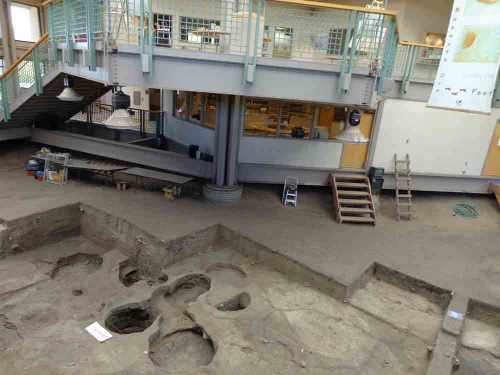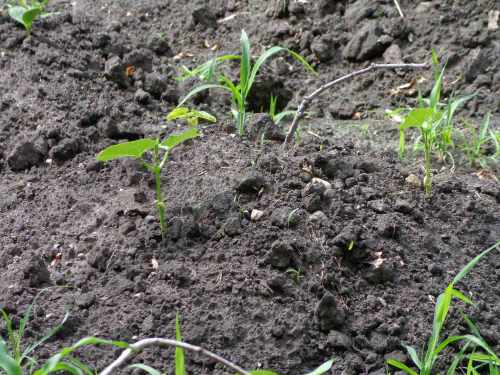On the attractive, tree-shaded campus of Dakota Wesleyan University, I located my next destination: the Dakota Discovery Museum. Alas, photography is not allowed inside, so I can’t share the wonderful things I saw within the museum. Fortunately, however, they also collect historic buildings, and those I could photograph—and which you’ll see in the next post.
Inside, my first surprise was a Native American pictograph, painted on buffalo hide, of a battle between Sioux and Crow, painted by the Lakota at Pine Ridge in 1891. The reason it was a surprise is that I’ve seen it in history books, and I really didn’t expect to find it here. (So a pleasant surprise.)
The museum focuses as much on Native American culture as it does on European history in the region. The quillwork was glorious, and it was interesting to see it morph into beadwork, as glass beads became available with the introduction of the fur trade. Walking around the museum, the displays continued to reveal the changing frontier, from Native American to fur trade, pioneer to farmer, growing towns, and into the 20th century. There were a few big items, such as a threshing machine and an old sheep wagon fitted out as a horse-drawn mobile home. However, most exhibits focused on the intimate details of daily life. Wonderful.
Rod Brown, the newly appointed director of the museum, seeing that I appeared to be more than casually glancing at exhibits, introduced himself and began to offer interesting details on the history of South Dakota. On a large map, he pointed out the Missouri River, which I normally associate with Lewis and Clark, but Rod related that this constitutes South Dakota’s “middle border.” People to the east of the river moved here from the East, and those west of the river moved from the West. There are definite cultural differences between the two regions, which are identified by locals as East River and West River. West River tends to be more Wild West. That’s where you have Deadwood, the Badlands, and the Black Hills. There is more tribal influence in West River, and more ranching. East River is more farming, and the landscape is less dramatic. A further designation is Middle Border Country, the land immediately adjacent to the river, on either side. The proximity to the water made this area easier to settle—even before Europeans arrived (hence the Prehistoric Indian Village on the other side of town). It’s a great place for farming, and following the river leads through a lot of handsome farms.
Mitchell is solidly in Middle Border Country, as are most of the Hutterite Colonies founded here. The largest ethnic groups to settle Middle Border Country were Germans and Norwegians, though there were also settlers from Bohemia, China, Denmark, Finland, France, Great Britain, Hungary, Luxembourg, Poland, Sweden, and Switzerland. So a remarkably diverse area.
Then time to head upstairs.











